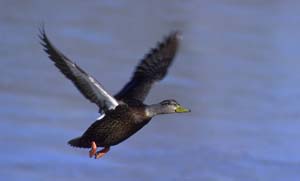Recycling fishing line is a great idea. It prevents wildlife from dieing or being injured by getting tangled in discarded line, a process that can sometimes be slow and painful.
Unfortunately, the most common kind of monofilament fishing line recycling bin — a PVC pipe capped with an elbow, is creating its own danger to wildlife, the Missouri Department of Conservation has revealed. Cavity nesting birds are entering the pipes, getting tangled in the fishing line, and dying.
In other places, uncapped PVC pipes, used as boundary markers and in irrigation systems are trapping and killing birds and lizards. We’ve written about that before. (Here.)
That the elbow-capped pipes are also a danger is a surprise. Kudos to the Missouri Department of Conservation for retro-fitting its monofilament recycling bins with a rubber covering over the opening– and especially for getting the word out on the danger of this design.
-Read the Missouri Department of Conservation (MDC) press release, here.
-Get all the details on the MDC blog. (It includes a video)
-More information is available from the MDC’s Stream Team, here.
The press release includes a link to more info from Audubon California. Find it here.
Photo of dead tree swallows above courtesy of Dianne Fieri



 st1:*{behavior:url(#ieooui) } <![endif]–>
st1:*{behavior:url(#ieooui) } <![endif]–>